Grow Kale at Home, even if you think you don’t have a green thumb! I know, I know, the idea of cultivating your own leafy greens might seem daunting, reserved for seasoned gardeners with sprawling backyards. But trust me, it’s easier than you think, and the rewards are incredibly satisfying. Imagine stepping outside your door and harvesting fresh, vibrant kale for your morning smoothie or a delicious salad – all thanks to your own efforts!
Kale, a nutritional powerhouse, has a rich history dating back to ancient Greece and Rome, where it was a staple food. Over centuries, it has spread across the globe, becoming a beloved ingredient in various cuisines. But beyond its culinary appeal, growing your own kale offers a sense of connection to nature and a sustainable way to access healthy food.
In today’s world, where we’re increasingly conscious of what we consume and where it comes from, learning to grow kale at home is more relevant than ever. Not only will you save money on grocery bills, but you’ll also have the peace of mind knowing that your kale is free from harmful pesticides and chemicals. Plus, it’s a fantastic way to reduce your carbon footprint and contribute to a more sustainable lifestyle. So, let’s dive into some simple yet effective DIY tricks and hacks that will have you harvesting your own kale in no time!
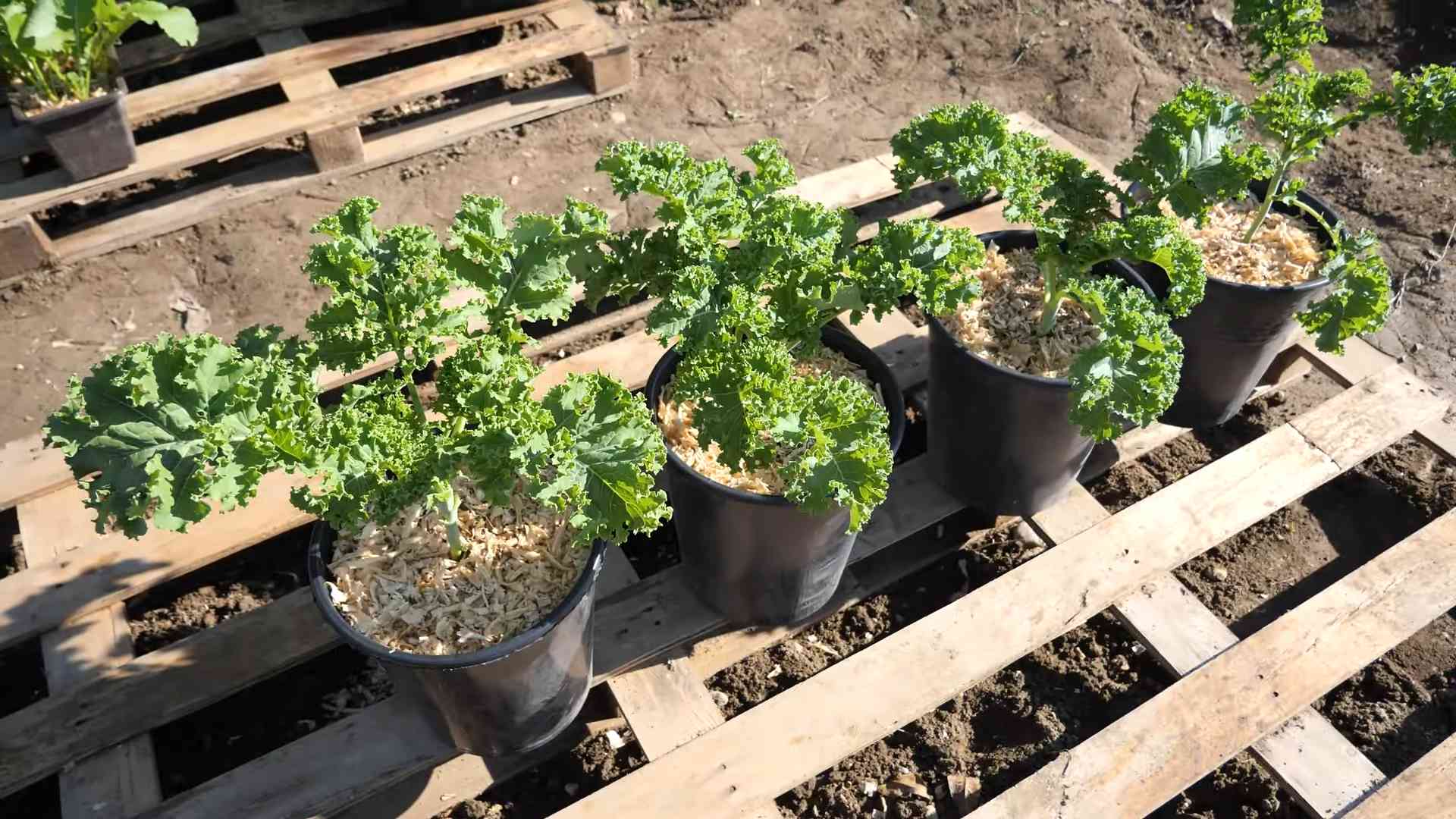
Growing Kale at Home: A Beginner’s Guide
Hey there, fellow gardening enthusiasts! I’m so excited to share my experience with growing kale at home. It’s surprisingly easy, incredibly rewarding, and gives you access to fresh, nutritious greens right in your backyard (or even on your balcony!). Kale is a super versatile veggie, perfect for salads, smoothies, soups, and even kale chips. Let’s dive in!
Choosing Your Kale Variety
Before we get our hands dirty, let’s talk kale varieties. There are tons to choose from, each with its own unique flavor and texture. Here are a few of my favorites:
* **Curly Kale:** This is the classic kale you probably see most often in the grocery store. It has tightly curled leaves and a slightly bitter taste, which mellows out when cooked.
* **Lacinato Kale (Dinosaur Kale):** Also known as Tuscan kale or cavolo nero, this variety has long, dark green, almost black leaves with a slightly bumpy texture. It has a milder, sweeter flavor than curly kale.
* **Red Russian Kale:** This kale has flat, fringed leaves with purple stems. It’s known for its tender texture and slightly sweet, nutty flavor.
* **Redbor Kale:** This is a beautiful ornamental kale with deeply ruffled, purple-red leaves. It’s also edible and has a slightly peppery flavor.
I recommend trying a few different varieties to see which ones you like best!
Starting from Seed vs. Buying Seedlings
You have two main options for starting your kale journey: starting from seed or buying seedlings from a local nursery. Both have their pros and cons:
* **Starting from Seed:** This is the more economical option, and it gives you more control over the entire growing process. However, it requires a bit more time and effort.
* **Buying Seedlings:** This is the quicker and easier option, as you’re essentially skipping the germination and early growth stages. However, it can be more expensive, and you may have fewer variety choices.
I personally prefer starting from seed because I enjoy the whole process, but if you’re short on time or new to gardening, buying seedlings is a great way to get started.
Starting Kale from Seed: A Step-by-Step Guide
If you’re going the seed route, here’s how I do it:
1. **Gather Your Supplies:** You’ll need kale seeds, seed starting trays or small pots, seed starting mix (a light, well-draining soil mix), a spray bottle, and a warm, sunny location (or a grow light).
2. **Sow the Seeds:** Fill your seed starting trays or pots with seed starting mix. Moisten the soil with your spray bottle. Sow 2-3 kale seeds per cell or pot, about 1/4 inch deep. Gently cover the seeds with soil and mist again.
3. **Provide Warmth and Light:** Kale seeds germinate best in temperatures between 65-75°F (18-24°C). Place your seed starting trays in a warm, sunny location or under a grow light. If using a grow light, keep it on for 14-16 hours per day.
4. **Keep the Soil Moist:** Keep the soil consistently moist, but not soggy. Check the soil daily and mist with your spray bottle as needed.
5. **Thin the Seedlings:** Once the seedlings have emerged and have a few sets of true leaves (usually after a week or two), thin them to one seedling per cell or pot. Choose the strongest, healthiest-looking seedling and snip off the others at the soil line.
6. **Harden Off the Seedlings:** Before transplanting your seedlings outdoors, you’ll need to “harden them off.” This means gradually exposing them to outdoor conditions over a period of 7-10 days. Start by placing them outdoors in a sheltered location for an hour or two each day, gradually increasing the amount of time they spend outside. This will help them acclimate to the sun, wind, and temperature changes.
Transplanting Kale Seedlings or Purchased Seedlings
Whether you started your kale from seed or bought seedlings, the transplanting process is the same:
1. **Choose a Sunny Location:** Kale thrives in full sun, meaning at least 6 hours of direct sunlight per day. Choose a location in your garden that gets plenty of sun.
2. **Prepare the Soil:** Kale prefers well-drained soil that is rich in organic matter. Amend your soil with compost or well-rotted manure before planting.
3. **Dig Holes:** Dig holes that are slightly larger than the root balls of your seedlings. Space the holes about 12-18 inches apart.
4. **Transplant the Seedlings:** Gently remove the seedlings from their containers and loosen the roots slightly. Place the seedlings in the holes and backfill with soil. Gently firm the soil around the base of the plants.
5. **Water Thoroughly:** Water the seedlings thoroughly after transplanting.
6. **Mulch:** Apply a layer of mulch around the base of the plants to help retain moisture, suppress weeds, and regulate soil temperature. I like to use straw or wood chips.
Caring for Your Kale Plants
Once your kale plants are in the ground, here’s how to keep them happy and healthy:
* **Watering:** Kale needs consistent moisture, especially during hot, dry weather. Water deeply whenever the top inch of soil feels dry.
* **Fertilizing:** Kale is a heavy feeder, meaning it needs plenty of nutrients to grow well. Fertilize your kale plants every 2-3 weeks with a balanced organic fertilizer.
* **Weeding:** Keep the area around your kale plants free of weeds. Weeds compete with kale for water and nutrients.
* **Pest Control:** Kale can be susceptible to pests like aphids, cabbage worms, and flea beetles. Inspect your plants regularly for signs of pests and take action as needed. I prefer using organic pest control methods, such as insecticidal soap or neem oil. You can also cover your plants with row covers to prevent pests from reaching them.
* **Bolting:** Bolting is when a plant prematurely flowers and goes to seed. This can happen when kale is exposed to hot weather. To prevent bolting, try to plant your kale in early spring or late summer, and provide shade during the hottest part of the day. If your kale does start to bolt, you can still harvest the leaves, but they may become more bitter.
Harvesting Your Kale
The best part of growing kale is, of course, harvesting it! You can start harvesting kale leaves as soon as they are large enough to eat, usually about 6-8 inches long.
1. **Harvest Outer Leaves:** Harvest the outer leaves first, leaving the inner leaves to continue growing. This will allow you to harvest kale continuously throughout the growing season.
2. **Use a Sharp Knife or Scissors:** Use a sharp knife or scissors to cut the leaves from the stem.
3. **Wash and Store:** Wash the kale leaves thoroughly and store them in the refrigerator in a plastic bag or container. Kale will keep in the refrigerator for up to a week.
Troubleshooting Common Kale Problems
Even with the best care, you might encounter some problems while growing kale. Here are a few common issues and how to address them:
* **Yellowing Leaves:** This can be caused by a variety of factors, including nutrient deficiencies, overwatering, or underwatering. Check the soil moisture and fertilize your plants if needed.
* **Holes in Leaves:** This is usually caused by pests like cabbage worms or flea beetles. Inspect your plants for pests and take action as needed.
* **Bolting:** As mentioned earlier, bolting is when a plant prematurely flowers and goes to seed. To prevent bolting, try to plant your kale in early spring or late summer, and provide shade during the hottest part of the day.
* **Root Rot:** This is caused by overwatering and poor drainage. Make sure your soil is well-drained and avoid overwatering.
Enjoying Your Homegrown Kale
Now that you’ve harvested your homegrown kale, it’s time to enjoy it! Here are a few of my favorite ways to use kale:
* **Salads:** Kale is a great addition to salads. Massage the kale leaves with olive oil and lemon juice to soften them before adding other ingredients.
* **Smoothies:** Kale is a superfood ingredient for smoothies. It adds a boost of nutrients and a slightly earthy flavor.
* **Soups:** Kale is a hearty addition to soups and stews. It holds its shape well during cooking and adds a boost of nutrients.
* **Kale Chips:** Kale chips are a healthy and delicious snack. Toss kale leaves with olive oil and salt, and bake them in the oven until crispy.
* **Sautéed Kale:** Sautéed kale is a quick and easy side dish. Sauté kale leaves with garlic and olive oil until tender.
Growing kale at home is a rewarding experience that provides you with fresh, nutritious greens right at your fingertips. With a little bit of care and attention, you can enjoy a bountiful harvest of kale throughout the growing season. Happy gardening!
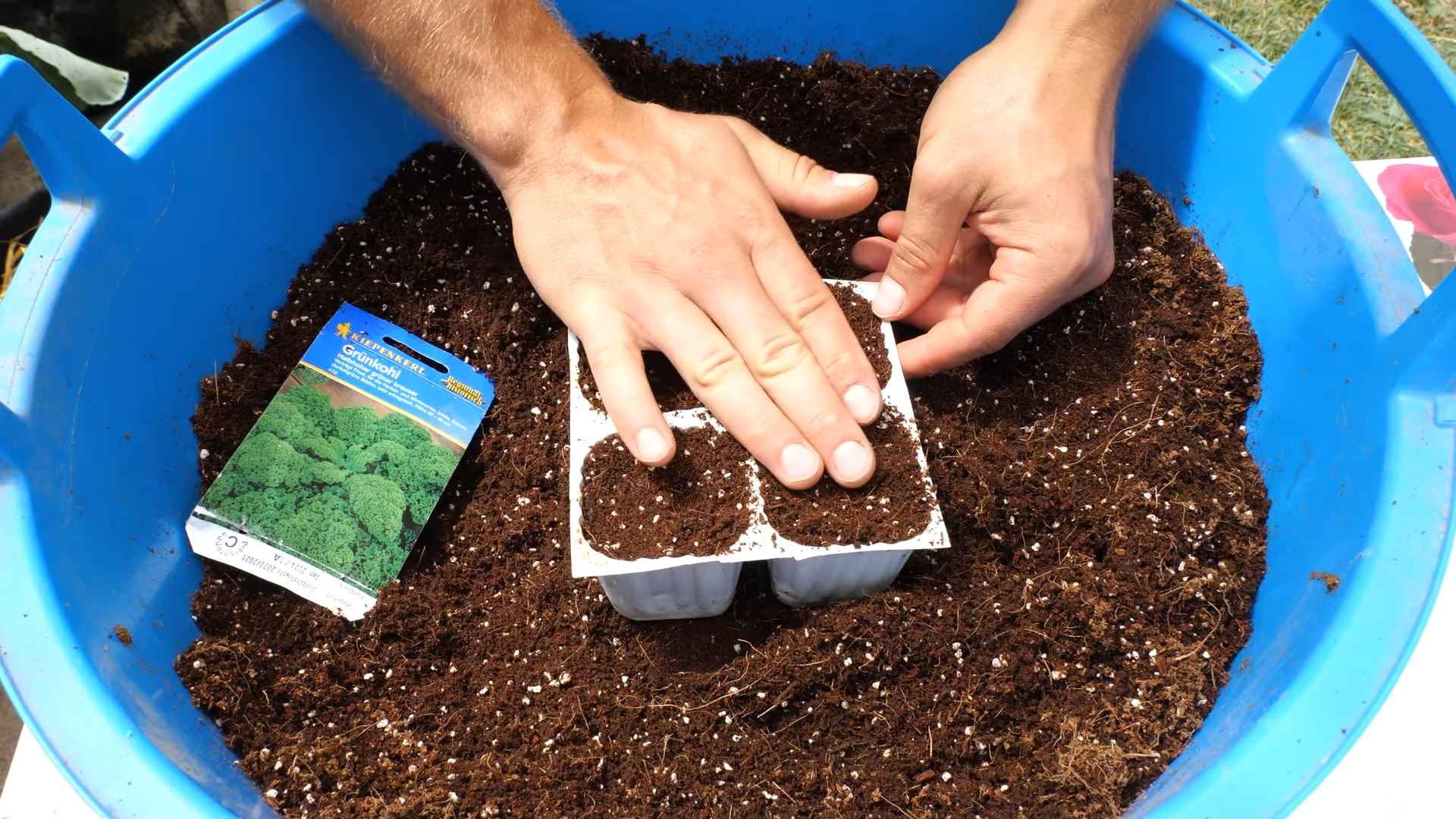
Conclusion
So, there you have it! Growing kale at home is not only achievable, but it’s also incredibly rewarding. From the vibrant, nutrient-packed leaves gracing your plate to the sheer satisfaction of nurturing something from seed to harvest, this DIY project is a game-changer for any home cook or gardening enthusiast. We’ve walked you through the simple steps, highlighting the ease and accessibility of cultivating your own supply of this superfood.
Why is this a must-try? Because fresh, homegrown kale surpasses anything you can find at the grocery store. The flavor is more intense, the texture is crisper, and you have complete control over the growing process, ensuring it’s free from unwanted pesticides and chemicals. Plus, think of the money you’ll save! No more overpriced bunches wilting in your refrigerator.
But the benefits extend beyond just taste and cost. Gardening is therapeutic. It’s a chance to connect with nature, de-stress, and engage in a mindful activity. Watching your kale plants thrive is a truly fulfilling experience. And let’s not forget the environmental impact. By growing your own food, you’re reducing your carbon footprint and supporting a more sustainable lifestyle.
Don’t be afraid to experiment! There are countless varieties of kale to explore, each with its unique flavor profile and texture. Try different growing methods, such as container gardening or raised beds, to find what works best for your space and preferences. Consider companion planting to deter pests and improve the overall health of your kale. You can even try growing different colored kale like purple or red russian kale.
Ready to embark on your kale-growing adventure? We encourage you to give this DIY trick a try. Start small, be patient, and don’t be discouraged by initial setbacks. Gardening is a learning process, and every mistake is an opportunity to grow (pun intended!).
Once you’ve harvested your first batch of homegrown kale, the culinary possibilities are endless. Sauté it with garlic and olive oil, add it to smoothies for a nutritional boost, bake it into crispy kale chips, or use it as a base for hearty salads. The only limit is your imagination!
We’re confident that you’ll be amazed by the results. But don’t just take our word for it. We want to hear about your experiences! Share your tips, tricks, and photos of your homegrown kale on social media using #HomegrownKale and tag us [Your Social Media Handle]. Let’s create a community of kale-loving gardeners and inspire others to embrace the joys of growing their own food. Happy gardening!
Frequently Asked Questions (FAQ)
What is the best time of year to plant kale?
Kale is a cool-season crop, meaning it thrives in cooler temperatures. The best time to plant kale depends on your climate. In areas with mild winters, you can plant kale in the fall for a winter harvest. In colder climates, plant kale in the early spring, a few weeks before the last expected frost. You can also start kale seeds indoors 6-8 weeks before the last frost and transplant them outdoors once the weather warms up. For a continuous harvest, consider succession planting, sowing new seeds every few weeks.
How much sunlight does kale need?
Kale needs at least 6 hours of sunlight per day to grow well. Choose a sunny spot in your garden or on your patio for your kale plants. If you live in a particularly hot climate, some afternoon shade can be beneficial to prevent the leaves from scorching. If you’re growing kale indoors, use grow lights to supplement natural sunlight.
What kind of soil is best for growing kale?
Kale prefers well-drained soil that is rich in organic matter. Amend your soil with compost or aged manure before planting to improve its fertility and drainage. Kale also prefers a slightly acidic to neutral soil pH, between 6.0 and 7.0. You can test your soil pH with a soil testing kit and adjust it accordingly.
How often should I water my kale plants?
Water your kale plants regularly, especially during dry periods. Keep the soil consistently moist, but not waterlogged. Water deeply at the base of the plants, avoiding wetting the leaves, which can promote fungal diseases. Mulching around your kale plants can help retain moisture in the soil and suppress weeds.
What are some common pests and diseases that affect kale?
Common pests that affect kale include aphids, cabbage worms, flea beetles, and slugs. You can control these pests with organic methods such as handpicking, insecticidal soap, or diatomaceous earth. Common diseases that affect kale include black rot, clubroot, and downy mildew. Prevent these diseases by providing good air circulation, avoiding overhead watering, and practicing crop rotation.
How do I harvest kale?
You can start harvesting kale leaves once they are about 4-6 inches long. Harvest the outer leaves first, leaving the inner leaves to continue growing. You can harvest kale leaves continuously throughout the growing season. To harvest, simply cut or snap off the leaves at the base of the stem.
Can I grow kale in containers?
Yes, kale grows well in containers. Choose a container that is at least 12 inches deep and wide to allow the roots to spread. Use a well-draining potting mix and water regularly. Container-grown kale may need to be fertilized more frequently than kale grown in the ground.
How do I store kale after harvesting?
Store kale in the refrigerator in a plastic bag or container. Kale will stay fresh for up to a week in the refrigerator. You can also freeze kale for longer storage. To freeze kale, blanch it in boiling water for 2-3 minutes, then plunge it into ice water to stop the cooking process. Drain the kale well and freeze it in freezer bags or containers.
Is kale a good source of nutrients?
Yes, kale is an excellent source of nutrients. It is rich in vitamins A, C, and K, as well as calcium, iron, and antioxidants. Kale is also a good source of fiber. Adding kale to your diet can help improve your overall health and well-being.
Can I eat the stems of kale?
Yes, you can eat the stems of kale, but they can be tough and fibrous. To make them more palatable, remove the tough outer layer with a vegetable peeler and chop the stems into small pieces. You can then sauté, steam, or add them to soups and stews.
What are some creative ways to use homegrown kale?
Beyond the usual salads and smoothies, get creative with your homegrown kale! Try making kale pesto, kale chips, or adding it to frittatas and omelets. You can also use kale as a topping for pizza or as a filling for ravioli. Don’t be afraid to experiment and discover your own favorite ways to enjoy this versatile vegetable. Remember, growing kale at home is all about enjoying the process and reaping the delicious rewards!

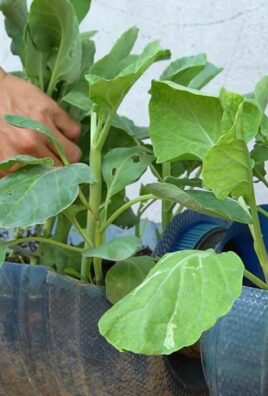
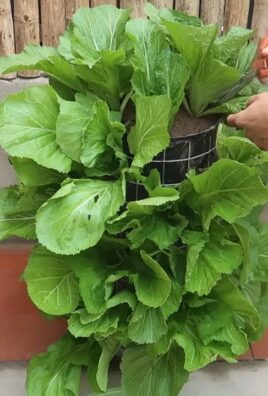
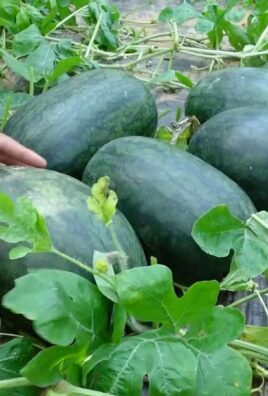
Leave a Comment